Abstract
Twelve spastic patients received single oral doses of a new anti-spastic drug DS103-282 (Sandoz) 6 mg, baclofen 20 mg, and placebo on three separate days. Passive stretch responses were measured before administration and for four hours afterwards. DS103-282 was more effective than baclofen, and both drugs were more effective than placebo. Analysis of the recordings confirmed that DS103-282 had a specific effect upon stretch reflexes independent of its effect on resting muscle tone. Its action appeared at 30 to 45 minutes after ingestion, with maximum activity at 60-90 minutes. Unwanted effects of DS103-282 were drowsiness and (in one case) potentiation of antihypertensive therapy.
Full text
PDF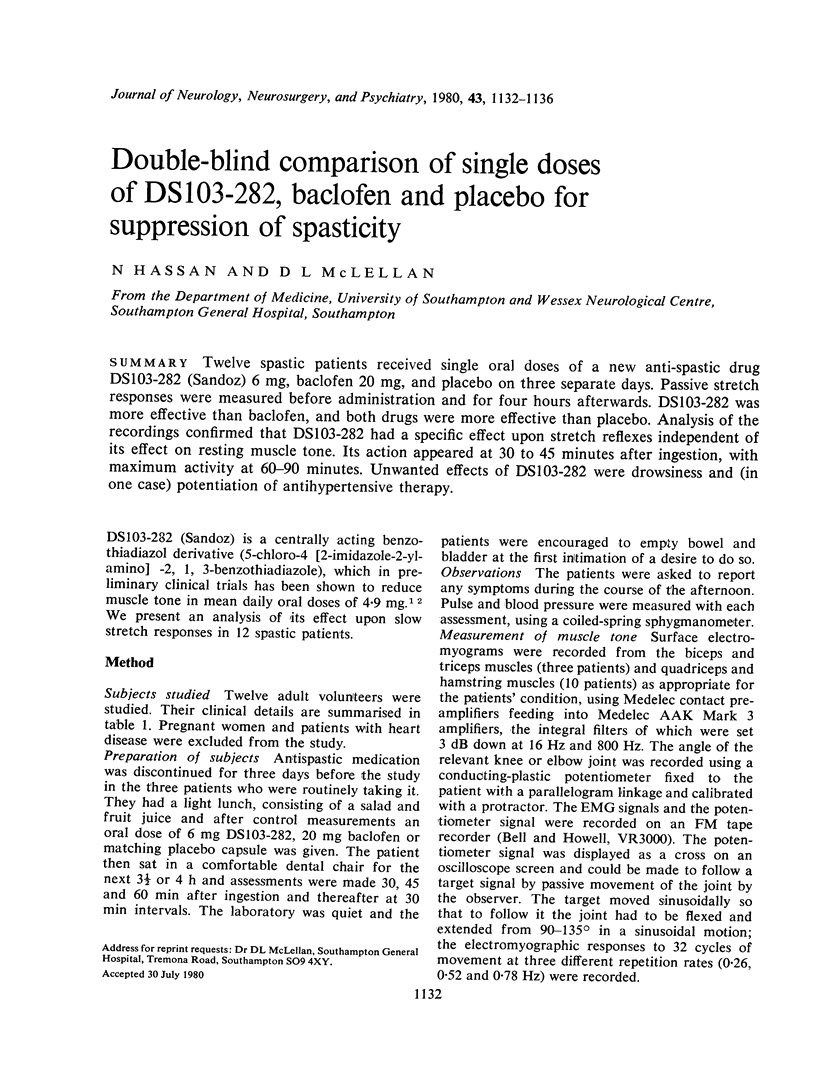
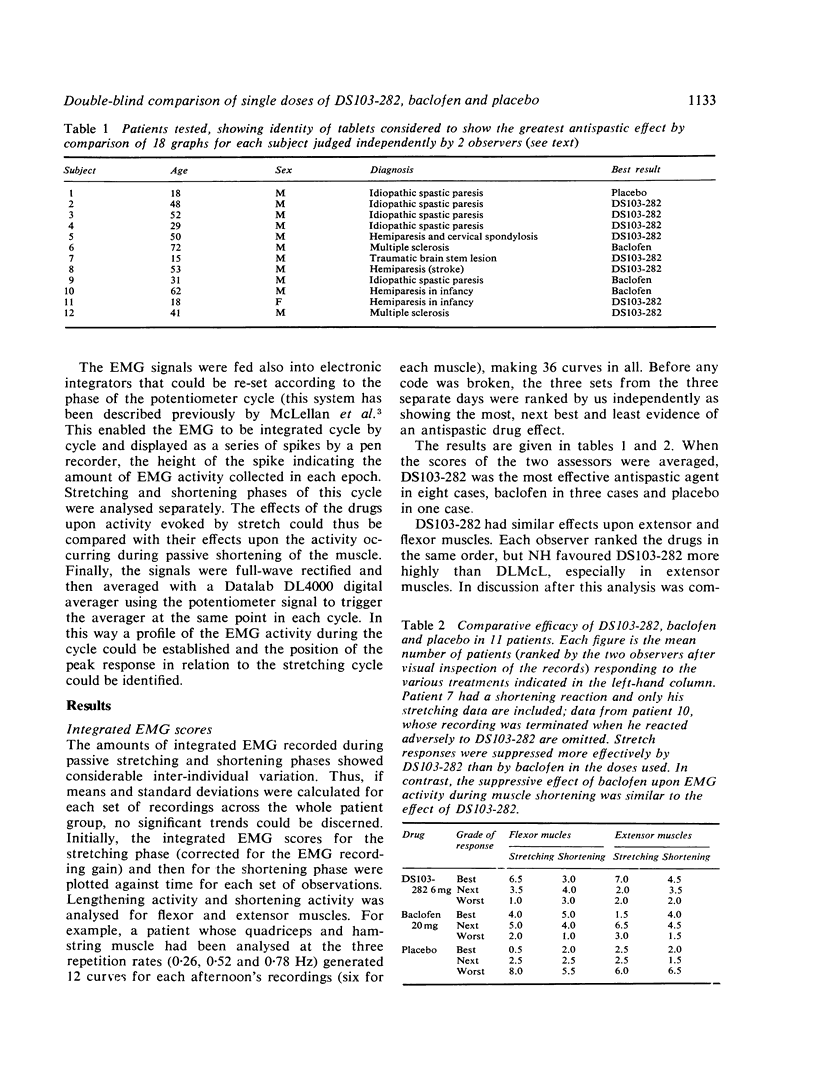
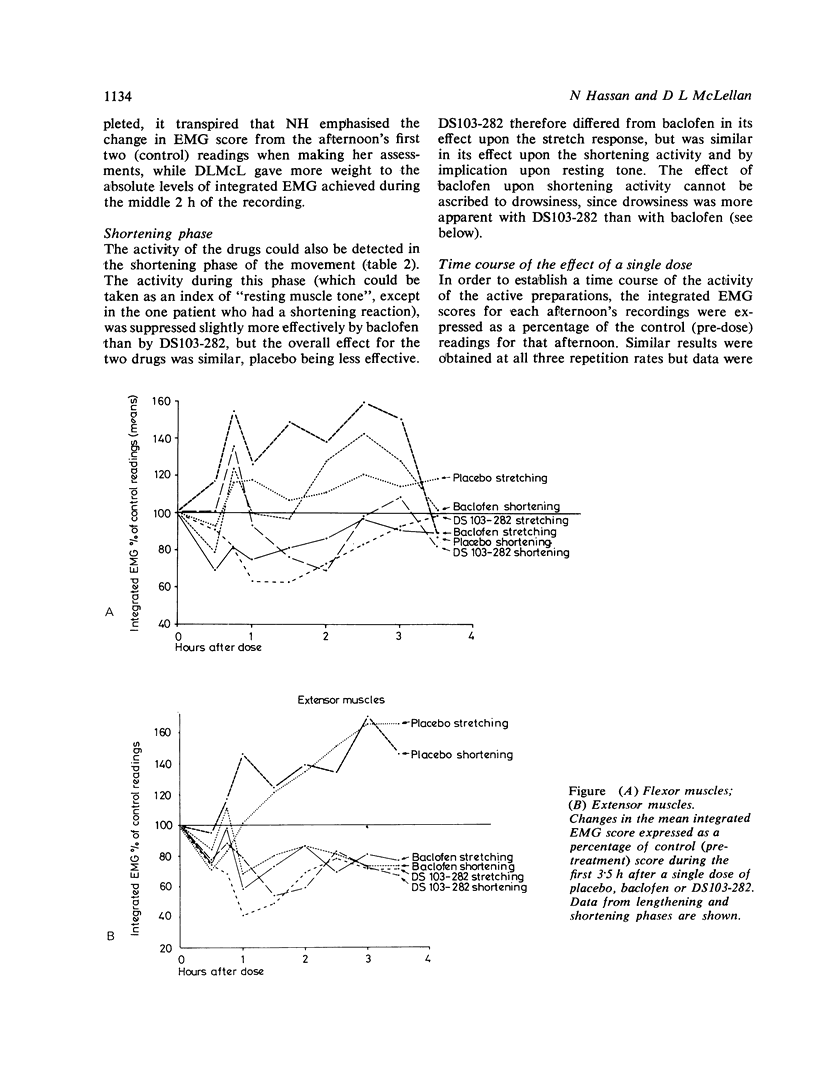
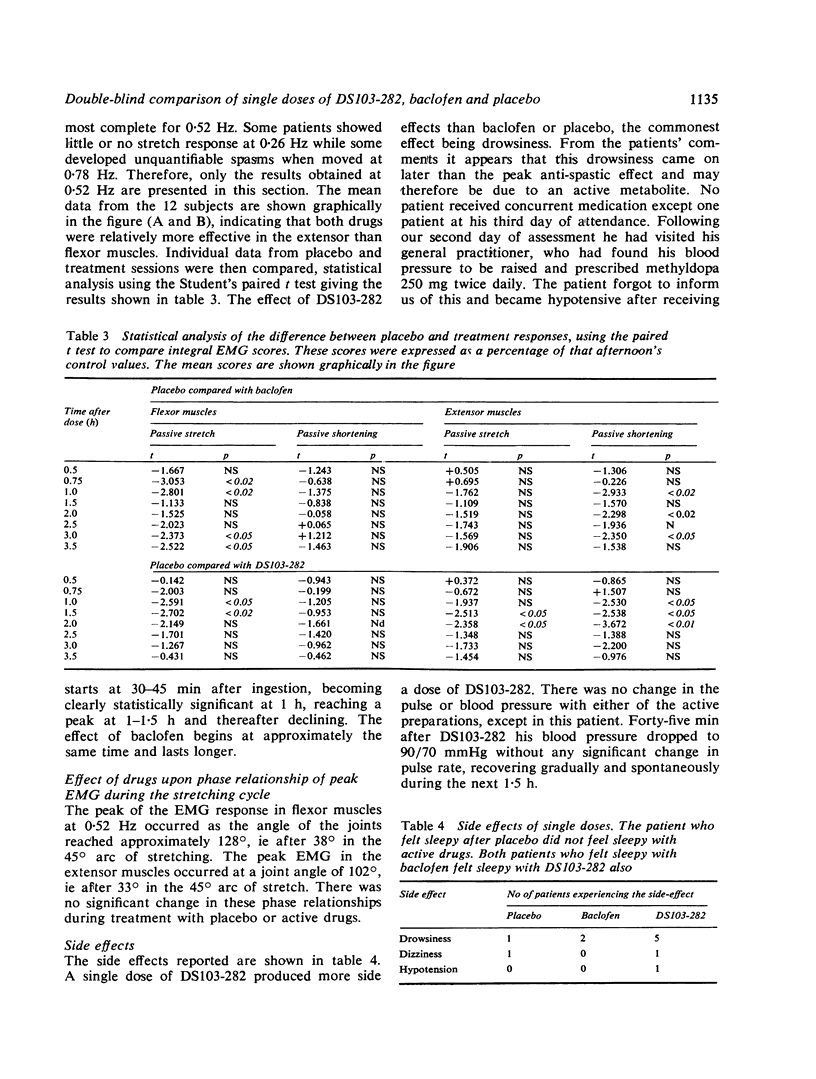
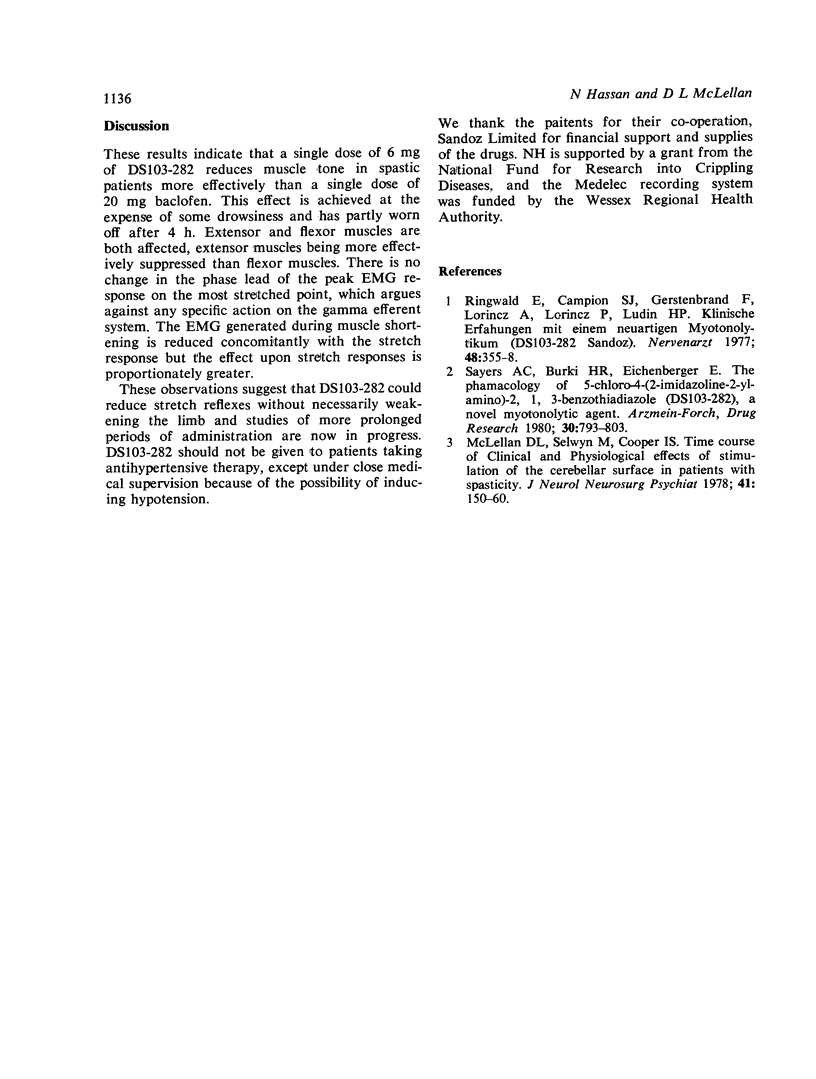
Selected References
These references are in PubMed. This may not be the complete list of references from this article.
- McLellan D. L., Selwyn M., Cooper I. S. Time course of clinical and physiological effects of stimulation of the cerebellar surface in patients with spasticity. J Neurol Neurosurg Psychiatry. 1978 Feb;41(2):150–160. doi: 10.1136/jnnp.41.2.150. [DOI] [PMC free article] [PubMed] [Google Scholar]
- Ringwald E., Campean S. J., Gerstenbrand F., Lorincz A., Lörincz P., Ludin H. P. Klinische Erfahrungen mit einem neuartigen Myotonolytikum (DS 103-282 Sandoz). Nervenarzt. 1977 Jul;48(7):355–358. [PubMed] [Google Scholar]
- Sayers A. C., Bürki H. R., Eichenberger E. The pharmacology of 5-chloro-4-(2-imidazolin-2-yl-amino)-2,1,3-benzothiadiazole (DS 103-282), a novel myotonolytic agent. Arzneimittelforschung. 1980;30(5):793–803. [PubMed] [Google Scholar]


